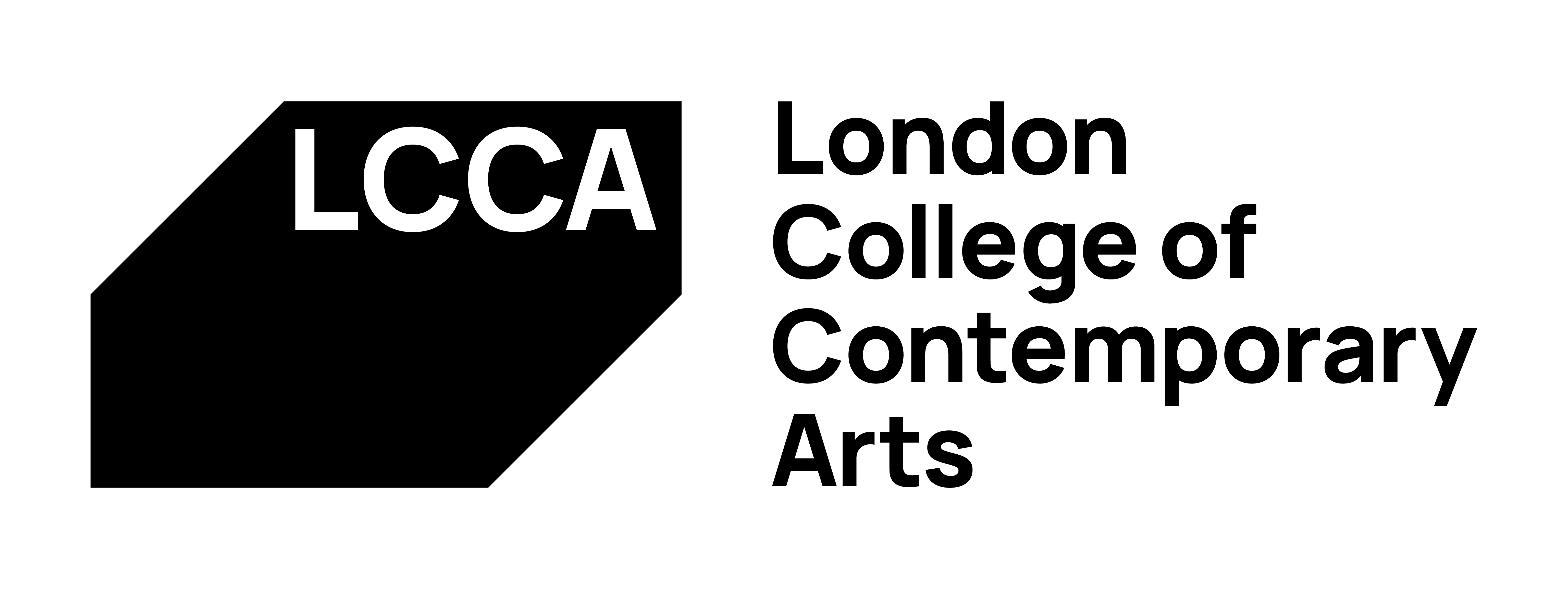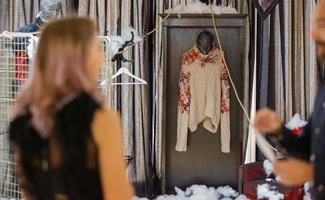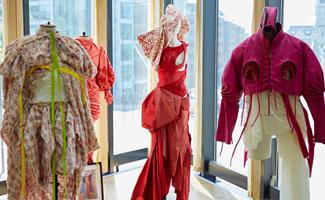Sadie Clayton, Fashion Course Director at LCCA, tells us about the professional landscape within today’s fashion industry and how to get ahead
Focusing on the importance of developing your own style and what Sadie looks for in students joining her course, we discussed what is expected of graduates aspiring to successful careers in fashion and what they can do to stay ahead of the curve in this increasingly competitive field.
Troy: Sadie, what’s at the top of your mind when you're working with students and preparing them for the fashion world?
Sadie: Being a practitioner in the industry, when I'm teaching, I always refer back to my experiences and think about why they're learning what they're learning and where that can take them in the future for the industry. My big endeavor when delivering my lectures is to ensure that students stay ahead of the curve.
I always remind students that they are graduating along with a thousand other fashion design students, so what's going to make them stand out from a design perspective or style perspective. I always try and ensure that they develop their own unique style, whether it be a way that they lay out their work or the way that they illustrate their ideas. That’s a big part of becoming a creative individual.
Troy: Do you see that confidence develop over time? Or is that something that you're looking for in the student when you choose them to join your course?
Sadie: That's a good question. When I'm looking at prospective students, I look at their potential and what we can do to help them progress or become better designers. Yet I am aware LCCA is an educational platform so I'm not expecting to get a McQueen through the door, obviously.
There are a few where I’m like “Wow, you're amazing” and I can nurture them and shape them into something fantastic but at the beginning, I very much like to see their work in process. What it is that’s inspiring them? I often ask “Why do you want to study fashion?” and they will say: “Oh, I have such a passion for fashion.” Yes, but why? What is it?
Troy: What does that mean?
Sadie: Yes, exactly. Is it the prints? The colors of the textiles? Is it the coat? What is it that inspires you? So, I like students to come with a voice, come with an opinion. I want students who are willing to think outside the box and push boundaries. We’ve got so many fast fashion brands and normal pretty little girl dresses. I want to see the next best thing.
Troy: You mentioned that you like to see students confidently experimenting in class. I don't think that has to end, necessarily, once you leave university. What do you think?
Sadie: This is the only time that they can be experimental and I often say that in class. This is your time to explore and experiment. Essentially, you're working with your own brief. Whereas when you design for a fashion house, you've got to work within their parameters working for their customer, their client, and therefore, you're restricted to what colors, fabric cuts you can work with. So yes, I always make sure I encourage them to go wild.
Troy: How would you say that students should build a portfolio to get their next job? Does it rely on the experimental work that they were able to do in university or is it a matter of bringing it all into alignment with the particular job that they're looking to get?
Sadie: That's a good question. I think, when it comes to level six, your final year, it's about showing that you can work to a brief and that you can design commercial garments. So, I think that from that side, you do your CAD computer-aided design through Illustrator for example so you can see the student’s thought out the construction of the garments.
However, I think if I were looking for students to come and work for me, I want to see their creativity, I want to see them playing around with different nips, clears and wires, and going wild, because then it's easier to go big and then rein it back in, rather than the other way around.
I'd like to see the expression of their identity, their uniqueness, and their creativity in their portfolio. Then, towards the end, I often encourage students to create a five-page mini portfolio to suit a client or brand if they're wanting to apply for a particular placement or a particular designer. This way, you can show them that you can design to their taste and to their brief.
Troy: What is it like for fashion students as they’re about to make that leap into the unknown?
Sadie: It's terrifying. I guarantee all students are like “Oh my God! What are we going to do now as we leave this place?”. So, while I teach them design processes and ways of thinking outside the box, I also manage their expectations from my professional practice perspective.
This means ensuring that they're aware of how to write their CV and make sure that their portfolio is spick and span so that when they do go out and fight with their competitors, they will come out on top.
Also, I make it real, I say “look, it's not easy”. It is a dog-eat-dog world, but it's about going out getting your face recognized, and networking. You can't get into London Fashion Week? Just go and hover around London Fashion Week, get speaking to people. It's all about networking. So, I always ensure that I encourage people to do that.
Troy: What kind of fashion roles do you think are the most realistic for students to aspire to?
Sadie: When I interview for a course, a lot of come in students say “I want to have my own brand.”, at first. But realistically, that is unless you've got millions of pounds waiting in your account just to open a label, it's actually quite impossible. There are so many factors that people don't realize and it can be challenging.
I think the most kind of obvious route is to get a junior design role. Again, that's not going to be at Gucci, Dior, or McQueen; it’s going to be on the high street and that's fine because you work your way up. Alternatively, they could consider places like ASOS or digital fashion big houses.
Another thing is styling. We all know about the fashion magazines, and there are so many and even more so, digital fashion magazines. I think also getting that experience and interning with stylists, photographers, and creative directors and just showing that you can put an image together on a body is a good approach to take too.
Another role that's really sought after, which is actually quite hard to find is pattern cutting and garment construction. This is because not many people (a) enjoy doing it or (b) are very good at it because it is really difficult.
It requires a logical brain; it requires a lot of patience. I'd always encourage my students to really try with their pattern cutting and construction sessions because if they can get that under their belt, they've got a foot up. Even from a seamstress perspective as well, being able to sew up garments to an industry-standard is really important.
Troy: Finally, what is your view on mentorships?
Sadie: I couldn't encourage placements enough. Obviously, during the pandemic, that's impossible for my second-year students, but hopefully next year we can get some placements on the way. When I was a student at Kingston, I did a placement with Gareth Pugh, with Nick Knight at SHOWstudio, and with Una Burke.
I did quite a few where you learn different things, meet different people and realize how the fashion industry works. I definitely encourage work placements. They’re really, really important.
Many thanks to Sadie Clayton for her time and these invaluable insights - we hope they will inspire you and help you to find your fashion success story.

 Fashion Business and Management 101: Mastering the Art of Selling Style
Fashion Business and Management 101: Mastering the Art of Selling Style  The Ultimate Guide to Fashion Marketing
The Ultimate Guide to Fashion Marketing